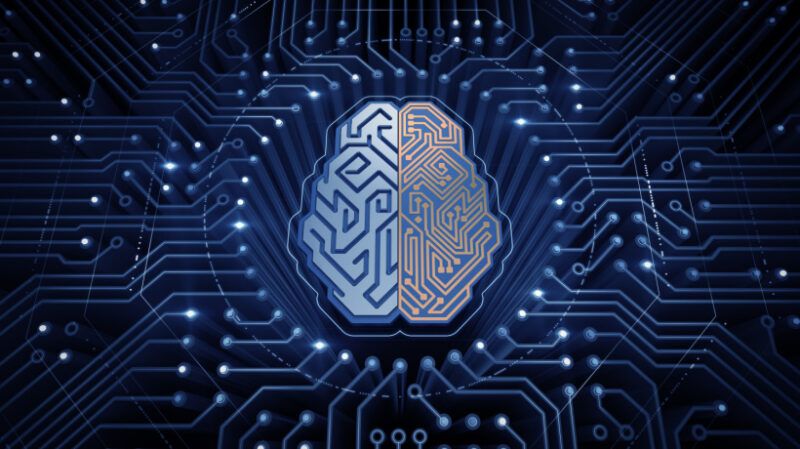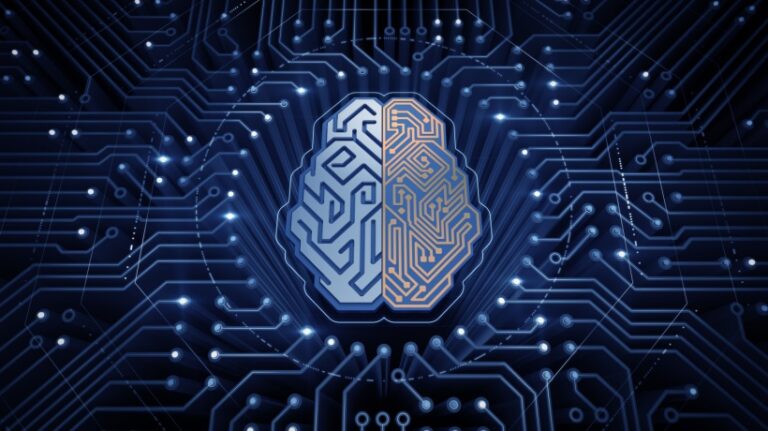
AI has been around for many years
Artificial intelligence (AI) seems to be taking the world by storm, but it’s not a new invention and has been around for years. The term refers to the simulation of human intelligence by sophisticated computer systems that react, analyze data and patterns to make decisions, and learn like humans. AI includes many technologies, such as machine learning and robotics, and is used in a variety of fields from medicine to education. This is a widespread technology that has the potential to revolutionize our lives, but it’s interesting to see how it has evolved over the years and how far it can go. This article examines the history of the technology and focuses on the role of AI in education.
History of AI
early beginnings
Philosophers and researchers have long been “cheating” on creating machines that can imitate human intelligence, even in ancient times. However, the concept of AI as we know it today was born at the 1956 Dartmouth Conference. The term “artificial intelligence” was invented by John McCarthy, an American computer and cognitive scientist who, in collaboration with colleagues, began creating an environment for AI research. They were among the first to discuss problem solving with AI, symbolic reasoning, and machine learning. In fact, it was around that time that researchers began creating systems that could use symbolic representations to solve problems. One of them was Logic Theorist, which many consider to be the first AI program.
Breakthroughs and Milestones
Over time, scientists have developed more and more AI systems. In the 60s and 70s, they created expert systems that could use knowledge bases to mimic the way humans make decisions. These were primarily used in the medical field, such as MYCIN, which can diagnose bacterial infections, and in the chemical field, such as DENDRAL, which can analyze chemical compounds. Then, in the 80s, machine learning was invented and researchers developed the first algorithms that could memorize patterns and make data-driven predictions. In the 90s and 00s, researchers created algorithms that could understand and generate human language. This is known as Natural Language Processing (NLP) and has begun to form the modern form of AI. From the 2010s until today, AI has been powered by data and developed in terms of deep learning and cloud computing.
AI in education
Past uses
As mentioned earlier, Logic Theorist, developed in the 60s, was the first attempt to introduce AI into education, as it could solve mathematical theorems. In the following decades, researchers focused on intelligent tutoring systems (ITS) that can provide instruction to students. However, while ambitious, efforts to deploy AI have faced several obstacles. At that time, people were not willing to try it because it was expensive. Additionally, most of them were not very tech savvy and had strong opinions about whether their systems were accurate or not.
current trends
Currently, AI is widely used in educational settings because AI-powered tutoring systems can provide personalized instruction to students. It uses machine learning to customize learning content based on student performance. Adaptive learning platforms are similar, but utilize student data to identify strengths and weaknesses and adjust course materials accordingly. AI can also be used in virtual and augmented reality to create an immersive learning environment for students with realistic settings and intelligent gamification elements to support them through the process. Additionally, AI can assist teachers by providing them with an AI-powered grading and feedback system that automates these tasks and frees up their time.
As more learning platforms implement AI, learning content will be tailored to the needs of students. Some programs also offer everyone the opportunity to have their own AI tutor to support them on their learning journey. VR classrooms based on AI technology are also starting to emerge, where students can explore virtual environments and gain a deeper understanding of difficult concepts. Additionally, AI supports lifelong learning, recommending courses and even areas of study for those who want to continue their education.
Future AI
The future of AI in education will be more like systems that are customized to the way each student learns. Instead of students changing to fit the system, the system changes to fit the students. For example, people can walk into a classroom where everything caters to the needs of the learner. Lighting, sound, lesson pacing, and even how content is presented can change based on real-time feedback about student mood and focus. how? AI can detect when students are feeling overwhelmed, bored, or confused and adjust the learning experience on the fly. You can slow down the lesson, change the format, add fun tasks, or create short breaks without students asking.
Collaboration will also change. AI can connect students with students around the world based not only on age and grade, but also on shared interests and skills. Group projects can be formed in new ways, mixing creative and analytical thinkers. Students can also be paired with an AI helper who supports each team member.
Education will also change its focus and become more student-centered. Teachers can use AI assistants to understand the classroom atmosphere, observe student learning, and suggest ways to help before problems occur. This allows teachers to be proactive rather than just reacting to problems. These assistants help teachers try new teaching methods by automatically creating activities, simulations, or assignments as needed.
Finally, ratings can vary widely. In the future, students may not be able to take traditional tests. Instead, AI will be able to continuously and silently assess learning based on real-time problem solving, creativity, teamwork, and critical thinking. The stress of “exam day” disappears and is replaced by the natural process of measuring growth.
Challenges of using AI in education
privacy
AI systems rely on data, which raises concerns about the privacy of sensitive personal information. Educational facilities using AI systems must follow local guidelines and regulations and be transparent about data collection and use. AI technologies such as facial recognition can easily jeopardize someone’s privacy rights and expose them to data breaches and hacking.
Discrimination in algorithms
AI systems collect information online and are trained on datasets. These sources may contain biased information, such as biased or racist opinions about particular groups of people. This can lead to unfair decisions and erroneous results. For example, an AI grading system can differentiate between racial groups and assign lower grades to students with certain characteristics, while awarding higher grades to others. Educators should therefore ensure that their preferred AI systems are trained on diverse and comprehensive datasets.
lack of human element
The idea is that if AI takes over the role of teacher or instructor, students will lack critical thinking and social skills. Although AI systems are effective in assisting students in their learning process, they lack the emotional connection that is important in education. Students will not learn how to act in social situations and will struggle to develop empathy. The role of instructors is important in shaping people’s behavior, especially for students of preschool age.
inequality
Not everyone has access to advanced technology and equipment. So there are concerns that if AI takes over education, millions of people will be excluded from the experience. For example, some countries do not have access to the Internet, while others have strict regulations regarding Internet use. Even in developed countries, there is resistance to the use of AI. Before education becomes dependent on AI, world leaders must ensure that the digital divide does not widen.
conclusion
Artificial intelligence has made great strides and seems to be the epicenter of new technology. We will have to wait and see whether its widespread use will benefit humanity. However, the benefits of AI in education and other fields are undeniable. Professionals leveraging AI and its tools must carefully consider the challenges involved and how to address them. One thing is for sure: AI has not yet written its own chapter in history.


